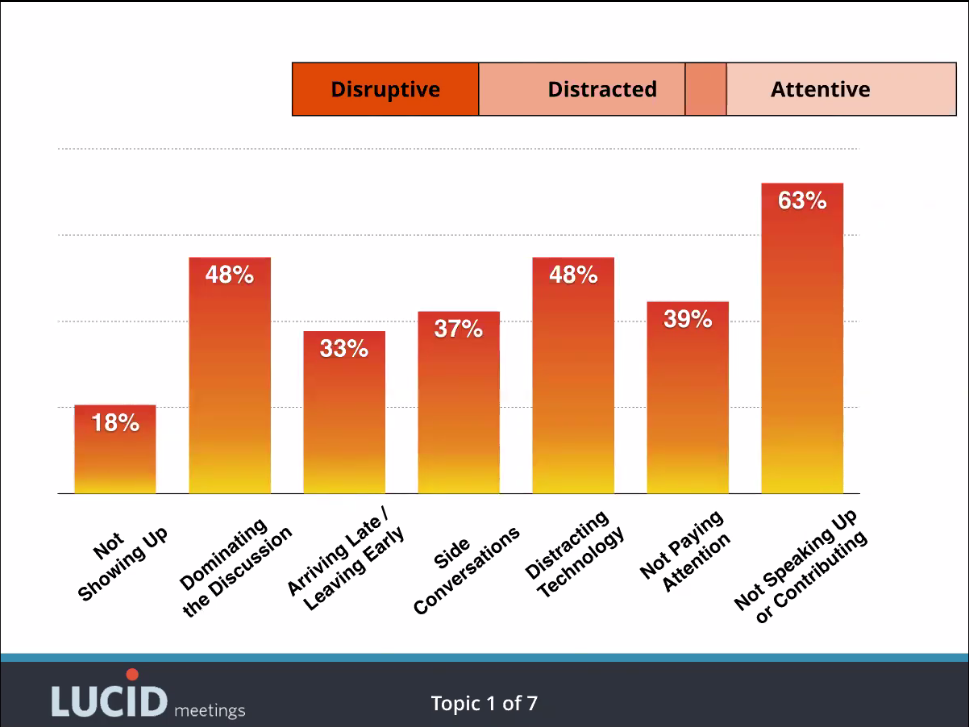The Power of Silence in Meetings
 Meetings are a time for people to come together to exchange ideas, discuss issues, communicate and make decisions.
Meetings are a time for people to come together to exchange ideas, discuss issues, communicate and make decisions.
And while there are many components to effective meetings, one factor that isn’t always necessary is talking.
To be engaged in a meeting doesn’t necessarily mean you are talking. In a world of overwhelming noise, silence is a powerful force that can help us cultivate relationships, encourage reflection and improve our overall communication ability.
As a facilitator though, this wasn’t always easy for me to understand. In meetings, I wanted people to share their ideas. I wanted energy and momentum and synergy. And when I didn’t get that, my first thought was that they were disinterested, disengaged and not listening.
Over time though, I have come to understand that talking does not equal engagement. A few examples:
- Some people’s communication and thinking styles are more reserved and measured – and if their point is made, they don’t feel the need to make it again.
- Some people would rather observe than speak.
- Some people weren’t as prepared for a topic and are considering in silence.
- Sometimes the conversation is moving too rapidly, or in too scattered of a manner.
- Sometimes people are wanting to talk, but not finding a chance to “get a word in.”
I’ll even go a step further and say that sometimes in meetings, silence isn’t just necessary, it must be created. Some of these times include . . .
- When the topic or decision is complex.
- When a brand new point has been contributed that deserves consideration.
- When the energy has gotten too high.
- When new ideas are required (a pause in brainstorming should be extended, not taken as a call to close down the activity).
- When you want people to really think!
So as a leader or meeting facilitator, here are a few ways that you can encourage silence and help use it to your advantage.
- Frame silence differently. When it is quiet in your meeting, let that sit for a second. Use the silence, rather than immediately trying to fill the air with more words.
- Create space for thinking. Providing thinking time in meetings can lead to better results, so allow for, and perhaps even plan for, that space within the structure of your meetings.
- Don’t judge the silent people. Rather, invite them to share, and make it comfortable if they don’t have anything new to add.
- Change your pace. You can use silence to manage the flow and energy of the meeting. The best meetings don’t have to be gab-fests or have a frantic pace.
Think about the power of silence in your next meeting, and use it wisely. When we use silence strategically, it can be a powerful collaboration and communication tool.
Find more expert advice from Kevin and his team at the Remote Leadership Institute: https://www.remoteleadershipinstitute.com/



